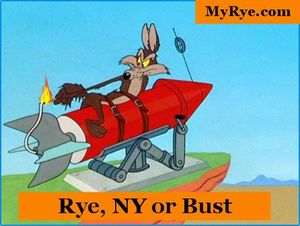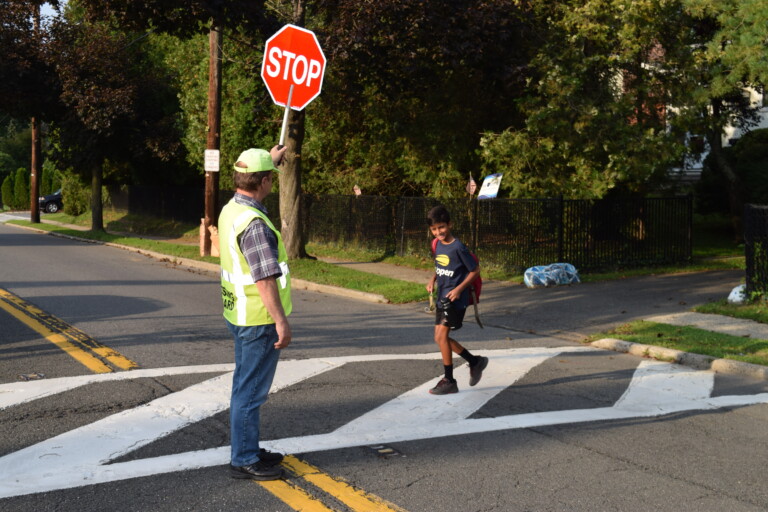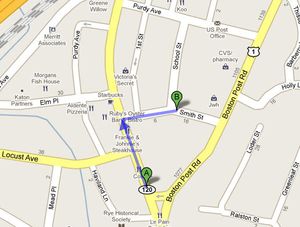Coyotes Mating; Rye PD Hazing
In the wake of two bizarre coyotes attacks last summer in Rye, the local PD has been a Hazing Permit for coyotes that will authorize hazing after the end of the hunting season on March 27th.
Hazing involves making noise, throwing objects, or taking similar action to decrease the animals’ comfort level around humans. Rye PD will be tracking all reported coyote sightings and monitoring developments closely; if there is any indication of abnormal behavior that would warrant a more aggressive approach, Rye PD “will seek authorization to begin trapping or hunting”.
(PHOTO: Rye PD Commish William Connors Talks Coyote with the rabid press corps.)
Rye PD is warning that as the warmer weather approaches, we can expect to see some increase in coyote activity. Coyotes are active at night, but not nocturnal. They are most frequently seen in daylight during their mating season, February/March. Activity increases during those months and especially when their young are born in April/May.
The young begin to wander out of the den in June/July, and during fall they are sent off to find their own territories. Coyotes eat anything: deer, mice, rats, frogs, squirrels, rabbits, birds, birdseed, pet food, fruits and vegetables, and garbage. They generally prey on smaller animals – therefore, small pets are at risk. They will eat cats, and they will attack small dogs – not as food, but as threats to their territory. They will generally not bother larger dogs (over 35 pounds).
(PHOTO: Nina Draddy of Lasalle Avenue talks coyote to WCBS-TV)
The primary danger posed by coyotes is to pets – cats and small dogs. For dogs, especially in March and April when they are setting up their dens and establishing territory. Attacks on humans are rare: for example, 650 people are hospitalized and one killed annually by dogs in New York State, and only a handful of coyote attacks occur nationwide.
Unfortunately, the City of Rye and the Sound Shore area experienced highly abnormal behavior during the summer of 2010. Residents are advised to take the following steps for personal safety:
- If you encounter a coyote, be aggressive. Loud noises and forceful behavior will normally scare the animal away. Wave your arms and throw sticks or stones. Boat horns and pepper spray are considered very effective.
- Do not feed coyotes.
- Do not provide food sources that may attract them, such as outdoor pet food or bird seed. They may be attracted by the birds and rodents drawn to bird feeders.
- Make garbage inaccessible.
- Do not allow pets to run free. Coyotes can see cats or small dogs as prey (coyotes’ average weight is 35 pounds; they will usually yield their territory to mid-sized or larger dogs).
- Small children should be supervised by an adult while outdoors.
- Unusual coyote behavior should be reported to the Police Department so sightings can be recorded and officers dispatched if necessary. Attacks or emergency situations should be reported via 911.









Commissioner,
You seem to be an expert in everything, well almost everything, maybe soon you will master running the RPD!
It’s amazing, some of the officers have more coyote kills than violations written…some s*** you just can’t make up!
I’m having trouble with my cat, he urine’s everywhere but the litter box, what should I do?